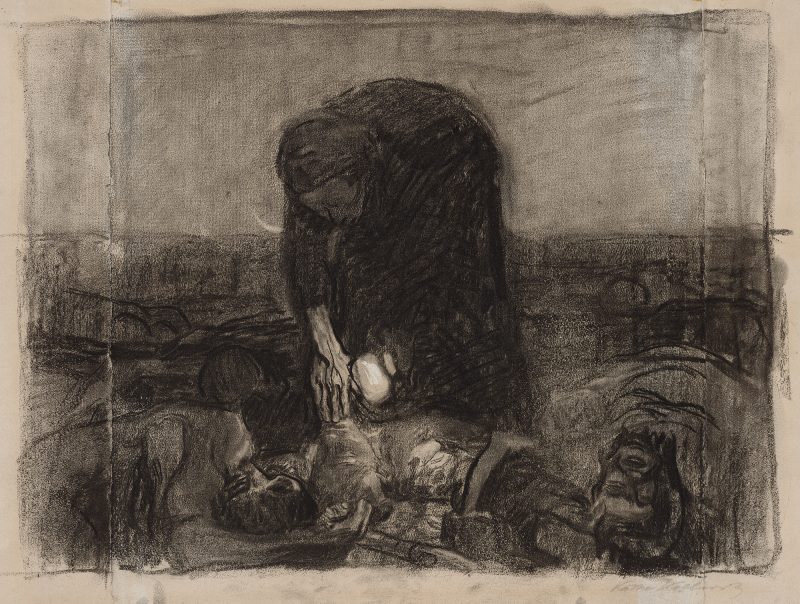
Battlefield
Kollwitz, Kathe
about 1907
Artwork Information
-
Title:
Battlefield
-
Artist:
Kollwitz, Kathe
-
Artist Bio:
German, 1867–1945
-
Date:
about 1907
-
Medium:
Charcoal, gouache
-
Dimensions:
18 1/2 x 24 1/2 in.
-
Credit Line:
Wichita Art Museum, Roland P. Murdock Collection
-
Object Number:
M30.41
-
Display:
Not Currently on Display
About the Artwork
Käthe Kollwitz epitomizes the artist as protestor. Her entire oeuvre may be described as a pictorial crusade against the acceptance of hunger, violence, or debasement as normal conditions of life. She explicitly denounced the doctrine of “art for art’s sake,” declaring that she meant to shun the rarified atmosphere of the “studio” in order to speak to the “man on the street,” to make him angry enough to act.
This activist interpretation of art suited the times. Kollwitz’ youth coincided with that of the international socialist movement. Her maternal grandfather, a Utopian who was persecuted for his activism by the government of Friedrich Wilhelm IV, greatly influenced the girl’s opinions. She responded with enormous sympathy to the revelations of human misery in the naturalist literature of the period. Emile Zola’s novel Germinal about the wretched existence of the French miners inspired some of her first works. After seeing a performance of Gerhart Hauptmann’s controversial play, The Weavers in 1893 she developed her first important print series, The Revolt of the Weavers. The bleak years of the pre-World War I depression and the loss of her youngest son in that war deepened Kollwitz’ commitment to art as a means of social protest. Up until her death in 1945, Käthe Kollwitz continued to promote the causes of world peace and justice for the working class.